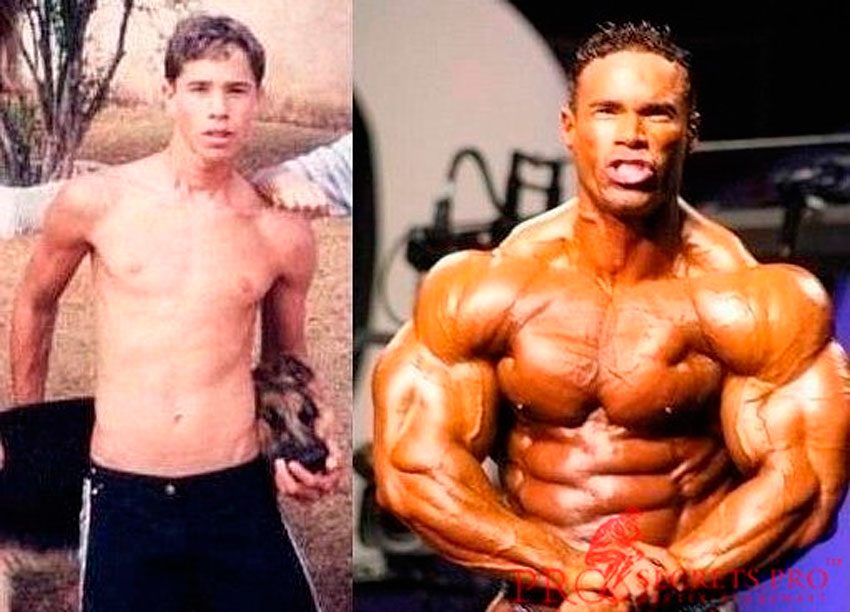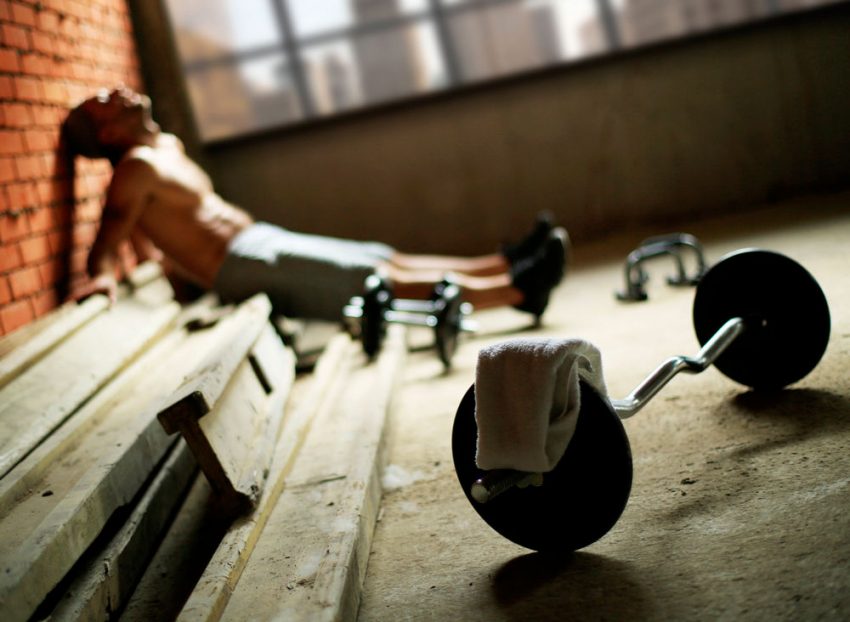
8-12 – for ground, 12-15 – for relief. 15-20 – for girls. The first approach is a warm-up, then we add to the workers. If you want to grow, do 15 to 8 reps in a pyramid. Approximately such recommendations for seto-repetitive schemes can be heard in any provincial rocking chair. Yes, it makes some sense, but let’s see how professional bodybuilders train. It can hardly be said that Chris Duffin is a girl. But he also does 50 leg presses to explode his quads. But Valentina Mishina is just a girl. But you can watch her squat with a heavy barbell for 8 reps. Where is the truth?
Why follow the rules

You can watch newbies doing 10- 12 working approaches, literally “killing yourself” in the hall. Do they become more physically prepared from this? It is unlikely, usually those who like to swing their biceps in 10 approaches remain with their arms-branches until a competent trainer sets them on the right path.
Important: the training process should be periodized. Macroperiodization is the division of training based on a global goal. The macro cycle in fitness can be aimed at improving technique, reducing body fat, gaining muscle mass, or general weight loss and the formation of healthy habits. Depending on the goal of the macrocycle, mesocycles are built, that is, training months. And they paint set-repetitions in a microcycle, that is, the number of “approaches and repetitions” of each exercise
You need to understand that all these rules are not invented by some athlete based on their experience. They are scientifically based, and came from the methodology of a slightly different sport – weightlifting. The closest thing to fitness is weight planning in bodybuilding. But the methodology of this sport is strongly influenced by such a factor as the use of pharmacology. You can say as much as you like about the fact that bodybuilding requires hard work first, and then doping, but the latter changes a lot. An athlete recovers many times faster, his physical capabilities are higher than that of an ordinary person. This is where the creepy drop-sets of 6 weight drops and workouts that load one muscle group in 10 exercises and 5 working approaches are taken.
Professionals operate with the categories “time under load”, “training volume ”,“ Training intensity ”and“ rest time ”. The second and third criteria are most important for us if the goal is to transform the figure. Volume is the total number of repetitions in all work sets. When it comes to muscle hypertrophy, it makes no sense to exceed 32-36 reps.
With such a volume, the intensity, that is, the working weight, cannot be very high. In sports terms, “very” is 80-90% of the one-rep maximum in an exercise. For muscle building purposes, it makes sense to train in the 70 to 80% range.
When it comes to “losing weight”, that is, burning fat and maintaining muscle mass, you will need to reduce the volume to about 16 reps overall. but do not decrease the intensity. These rules apply to basic multi-joint exercises. “Isolation” can obey others.
Strength training aimed at developing only physical quality – strength, is performed in a volume of 15 to 25 repetitions. With good recovery abilities, the volume can be raised to 36 repetitions, but no more.
Another factor that matters is the rest time between work sets. Optimal for non-strength training is to rest 60 to 120 seconds between sets. Strength training in powerlifting style may require more time to rest.
This is in theory, but in practice, a variety of layouts are possible. In practical training, such a factor as the overall recovery of the athlete is important. Therefore sets and reps can vary individually.
How many sets and reps to do
Watch this video on YouTube

8-12 – for ground, 12-15 – for relief. 15-20 – for girls. The first approach is a warm-up, then we add to the workers. If you want to grow, do 15 to 8 reps in a pyramid. Approximately such recommendations for seto-repetitive schemes can be heard in any provincial rocking chair. Yes, it makes some sense, but let’s see how professional bodybuilders train. It can hardly be said that Chris Duffin is a girl. But he also does 50 leg presses to explode his quads. But Valentina Mishina is just a girl. But you can watch her squat with a heavy barbell for 8 reps. Where is the truth?
Why follow the rules

You can watch newbies doing 10- 12 working approaches, literally “killing yourself” in the hall. Do they become more physically prepared from this? It is unlikely, usually those who like to swing their biceps in 10 approaches remain with their arms-branches until a competent trainer sets them on the right path.
Important: the training process should be periodized. Macroperiodization is the division of training based on a global goal. The macro cycle in fitness can be aimed at improving technique, reducing body fat, gaining muscle mass, or general weight loss and the formation of healthy habits. Depending on the goal of the macrocycle, mesocycles are built, that is, training months. And they paint seto-repetitions in a microcycle, that is, the number of “approaches and repetitions” of each exercise
You need to understand that all these rules are not invented by some athlete based on their experience. They are scientifically based, and came from the methodology of a slightly different sport – weightlifting. The closest thing to fitness is weight planning in bodybuilding. But the methodology of this sport is strongly influenced by such a factor as the use of pharmacology…. You can say as much as you like about the fact that bodybuilding requires hard work first, and then doping, but the latter changes a lot. An athlete recovers many times faster, his physical capabilities are higher than that of an ordinary person. This is where the creepy drop sets of 6 weight drops and workouts that load one muscle group in 10 exercises and 5 working approaches are taken.
Professionals use the categories “time under load”, “training volume “,” Training intensity “and” rest time “. The second and third criteria are most important for us if the goal is to transform the figure. Volume is the total number of repetitions in all work sets. When it comes to muscle hypertrophy, it makes no sense to exceed 32-36 reps.
With such a volume, the intensity, that is, the working weight, cannot be very high. In sports terms, “very” is 80-90% of the one-rep maximum in an exercise. For muscle building purposes, it makes sense to train in the 70 to 80% range.
When it comes to “losing weight”, that is, burning fat and maintaining muscle mass, you will need to reduce the volume to about 16 reps overall. but do not decrease the intensity. These rules apply to basic multi-joint exercises. “Isolation” can obey others.
Strength training aimed at developing only physical quality – strength, is performed in a volume of 15 to 25 repetitions. With good recovery abilities, the volume can be raised to 36 repetitions, but no more.
Such a factor as the rest time between working sets is also important. Optimal for non-strength training is to rest 60 to 120 seconds between sets. Strength training in powerlifting style may require more time to rest.
This is in theory, but in practice, a variety of layouts are possible. In practical training, such a factor as the overall recovery of the athlete is important…. Therefore sets and reps can vary individually.
How many sets and reps to do
Watch this video on YouTube
Different goals – different number of repetitions

How to write “layouts”? They are based on general information:
- For the development of strength, perform from 1 repetition to 5-6 in the approach . Strength training is the most “accurate” one, it does not allow the athlete to do it “intuitively” in most cases, and does not require performing work in failure. Strength training involves doing 4-6 reps in the 70 percent range of the 1RM, triplets up to 80%, twos and singles higher. In this case, “technical one-repetitions” are used, when the athlete performs work for 1 repetition with a lighter weight, which he can lift for 4-6 repetitions… The difference here is that each rep is performed in a competitive technique, that is, from the starting position as at the beginning of the set, and not as in bodybuilding, from a position in which the joints can be slightly bent;
- For hypertrophy, that is, muscle growth – 6 to 12 repetitions . In the sources, the data vary, the “golden mean” here is to do the exercise at a normal pace, and try to keep track of how many repetitions will be performed in 30 seconds. Approximately so much a beginner needs for hypertrophy. More experienced ones can reach 40 seconds and near-failure repetitions;
- Losing weight does not need much, we have already found out . But bodybuilding sources insist that they do 15-20 reps. It doesn’t really make much sense in a fitness situation. Most non-professional athletes find it difficult to maintain a safe starting position. They seriously break equipment and can be injured. Or another option – they are engaged in “aerobics with dumbbells”, that is, they perform power movements with minimal weight, and are not able to preserve the muscles because of this. To ensure fat burning, and not to provoke muscle breakdown, it is still recommended to do two to three six-repetition sets of basic exercises at the beginning of the workout. After that, you can do anything, for example, 20-repetitive “dumbbell aerobics.”
The most important problem for a fitness athlete is the adequate choice of weights. Some tend not to refine, others take each approach too close to failure and overtrain. Still others avoid normal barbells and dumbbells altogether, and being healthy, for some unknown reason, practice with rubber bands or something like that.
Ideally, you need to do at least a “estimate” in threes and calculate your PM in basic exercises. But those who are afraid to lift hard can do one “failure” approach with conventional weights, find a 1RM calculator on the Internet.
It is better to comply with the percentages indicated above, and lift the working weights in proportion to the increase in strength, and not as you like. The approach, when in one workout a person lifts 100 kg in squats, and on another with terrible technique he tries to get up to 150, because the girl of his dreams came to the gym, is not acceptable when it comes to fitness for health.
How much is needed do reps for muscle growth
Watch this video on YouTube
Over-volume training

Imagine a long distance runner. He needs the strength of his legs, and sufficient power for their work. But he absolutely does not need to drag 100 kg of muscle mass on himself. Extra-volume training is used when it is necessary to develop strength endurance, and the skill of sufficiently effective functioning under prolonged repetitive load.
In this variant, training schemes with 1, 2 or more minutes under load can be used. A similar methodology is used for weight loss training with mini barbells – Hot Iron and Body Pump.
Different methodological techniques can be used:
- Long sets with long rest can be used to develop strength endurance, for example, for running at medium distances;
- “Losing weight” is usually prepared using various pyramids, “ladders”, and other techniques that allow you to increase the number of repetitions in the approach and extend the time under load
Sets

How many sets to take? There is a rule of 12 – one muscle group should not have more than 12 working approaches in total. This applies to both weight loss and recruitment. For strength training, such rules do not work, where the load is measured in KPSh, that is, the number of barbell lifts, and individual characteristics are taken into account. There are athletes for whom volumetric training is not suitable, but there are also those who cannot work intensively, and are forced to adhere to constantly medium intensity and high volume with occasional peaks.
In practice, the following schemes are used:
- 3-12 approaches for strength training;
- 3-4 for hypertrophy and fat burning;
- Cross-training and circuit training schemes for the purpose of increasing strength endurance
Rest time

These are few respects, but if you rest in the gym on a timer, and not at the behest of the heart, the results will be more impressive.
The rules are simple:
- 45 second rest periods – for multi-repetitive workouts for strength endurance;
- A minute for hypertrophy;
- 90 seconds for basic hypertrophy exercises;
- Anything more – for the development of strength and power
If the rest time is respected, but do not go out to complete all the planned repetitions t, the weight of the weights are incorrectly selected. In this case, it is recommended to reduce it and observe the time intervals for rest more carefully..
Beginners and after injuries

In training for beginners, it is recommended to reduce the number of approaches by 1, but stay true to the set repetitions. This will avoid overtraining, but will help activate the muscle fibers enough to grow. In general, beginners need to follow the technique more, so at the very beginning of training, 8-12 weeks of the strength cycle is recommended to develop the exercise technique. Then they move on to the schemes “on the mass” and “on the relief.”
Recovery from injuries should take place according to the doctor’s recommendations. If the period of absence of training was more than 12 weeks, it is worth starting to engage in the program for beginners, and choosing working weights intuitively, relying on the absence of discomfort.
Important: sometimes, with injuries, the pain goes away from warming up, that is, when blood circulation accelerates … This does not mean that you need to work out with a high load right away, but it may well mean that it is better for the trainee to warm up and do simple exercise therapy exercises
The meaning of coaching is in the individual selection of exercises and seto-repetitions. If you can’t make a choice on your own, it makes sense to contact a coach to draw up a program.
How do muscles grow? 5 by 5, 3 by 8? What is the ideal set pattern?
Watch this video on YouTube
Different goals – different number of repetitions

How to write “layouts “? They are based on general information:
- For the development of strength, perform from 1 repetition to 5-6 in the approach . Strength training is the most “accurate” one, it does not allow the athlete to do it “intuitively” in most cases, and does not require performing work in failure. Strength training involves doing 4-6 reps in the 70 percent range of the 1RM, triplets up to 80%, twos and singles higher. In this case, “technical one-repetitions” are used, when the athlete performs work for 1 repetition with a lighter weight, which he can lift for 4-6 repetitions. The difference here is that each rep is performed in a competitive technique, that is, from the starting position as at the beginning of the set, and not as in bodybuilding, from a position in which the joints can be slightly bent;
- For hypertrophy, that is, muscle growth – 6 to 12 repetitions . In the sources, the data vary, the “golden mean” here is to do the exercise at a normal pace, and try to keep track of how many repetitions will be performed in 30 seconds. Approximately so much a beginner needs for hypertrophy. More experienced ones can reach up to 40 seconds and near-failure repetitions;
- Losing weight does not need much, we have already found out. But bodybuilding sources insist that they do 15-20 reps. It doesn’t really make much sense in a fitness situation. Most non-professional athletes find it difficult to maintain a safe starting position. They seriously break equipment and can be injured. Or another option – they are engaged in “aerobics with dumbbells”, that is, they perform power movements with minimal weight, and are not able to preserve the muscles because of this. To ensure fat burning, and not to provoke muscle breakdown, it is still recommended to do two to three six-repetition sets of basic exercises at the beginning of the workout. After that, you can do anything, for example, 20-repetitive “dumbbell aerobics.”
The most important problem for a fitness athlete is the adequate choice of weights. Some tend not to refine, others take each approach too close to failure and overtrain. Still others avoid normal barbells and dumbbells altogether, and being healthy, for some unknown reason, practice with rubber bands or something like that.
Ideally, you need to do at least a “estimate” in threes and calculate your PM in basic exercises. But those who are afraid to lift heavy can do one “failure” approach with conventional weights and find a 1RM calculator on the Internet.
It is better to observe the percentages indicated above and lift working weights in proportion to the increase in strength, and not as you like. The approach, when in one workout a person lifts 100 kg in squats, and in another with terrible technique he tries to get up to 150, because the girl of his dreams came to the gym, is not acceptable when it comes to fitness for health.
How many reps to do for muscle growth
Watch this video on YouTube
Super Volume Workouts

Imagine a long distance runner. He needs the strength of his legs, and sufficient power for their work. But he absolutely does not need to drag 100 kg of muscle mass on himself. Extra-volume training is used when it is necessary to develop strength endurance, and the skill of sufficiently effective functioning under prolonged repetitive load.
In this variant, training schemes with 1, 2 or more minutes under load can be used. A similar methodology is used for weight loss training with mini barbells – Hot Iron and Body Pump.
Different methodological techniques can be used:
- For the development of strength endurance, for example, for running on medium distances, long sets with long rest can be used;
- “Losing weight” is usually prepared using various pyramids, “ladders”, and other techniques that allow you to increase the number of repetitions in the approach and extend the time under load
Approaches

How many sets to do? There is a rule of 12 – one muscle group should not have more than 12 working approaches in total. This applies to both weight loss and recruitment. For strength training, such rules do not work, where the load is measured in KPSh, that is, the number of barbell lifts, and individual characteristics are taken into account. There are athletes for whom volumetric training is not suitable, but there are also those who cannot work intensively, and are forced to adhere to constantly medium intensity and high volume with occasional peaks.
In practice, the following schemes are used:
- 3-12 approaches for strength training;
- 3-4 for hypertrophy and fat burning;
- Cross-training and circuit training schemes for the purpose of increasing strength endurance
Rest time

These are few respects, but if you rest in the gym on a timer, and not at the behest of the heart, the results will be more impressive.
The rules are simple:
- 45 second rest periods – for multi-repetitive workouts for strength endurance;
- A minute for hypertrophy;
- 90 seconds for basic hypertrophy exercises;
- Anything more – for the development of strength and power
If the rest time is respected, but do not go out to complete all the planned repetitions t, the weight of the weights are incorrectly selected. In this case, it is recommended to lower it and observe the time intervals for rest more carefully.
For beginners and after injuries

In training for beginners, it is recommended to reduce the number of approaches by 1, but remain faithful to the “layouts” for repetitions in the set. This will avoid overtraining, but will help activate the muscle fibers enough to grow. In general, beginners need to follow the technique more, so at the very beginning of training, 8-12 weeks of the strength cycle is recommended to develop the exercise technique. Then they move on to the schemes “on the mass” and “on the relief.”
Recovery from injuries should take place according to the doctor’s recommendations. If the period of absence of training was more than 12 weeks, it is worth starting to engage in the program for beginners, and choosing working weights intuitively, relying on the absence of discomfort.
Important: sometimes, with injuries, the pain goes away from warming up, that is, when blood circulation is accelerated … This does not mean that you need to work out with a high load right away, but it may well mean that it is better for the trainee to warm up and do simple exercise therapy exercises
The meaning of coaching is in the individual selection of exercises and seto-repetitions. If you can’t make a choice on your own, it makes sense to contact a coach to draw up a program.
How do muscles grow? 5 by 5, 3 by 8? What is the ideal approach?
Watch this video on YouTube
